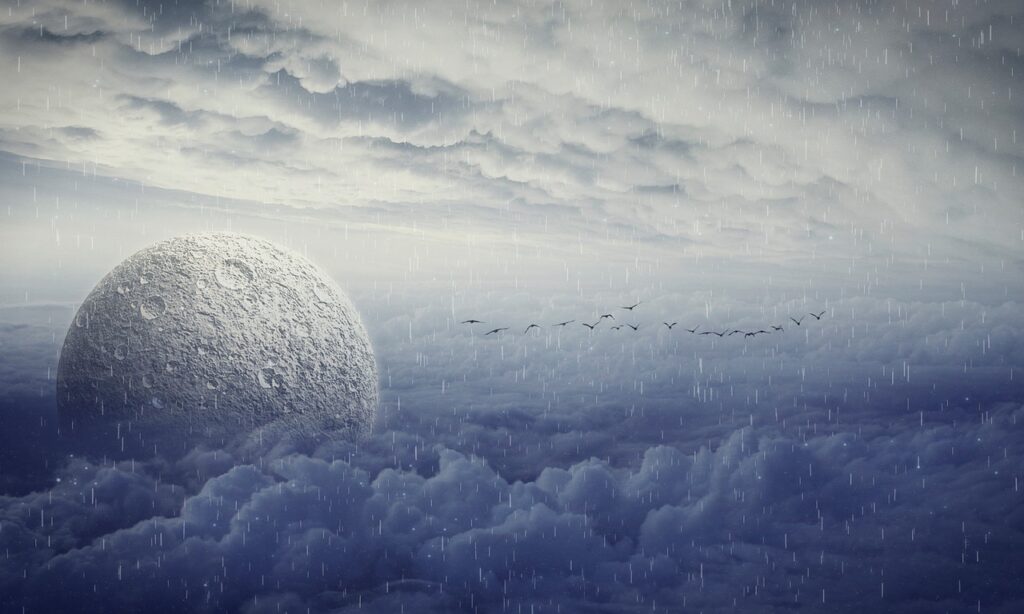The water cycle is a natural phenomenon that supports life on Earth. Water is an essential compound for all living organisms. Our cells need a sufficient amount of water for survival. In fact, our cell is composed of more than 70% of water molecules by mass, the human body is 60% water, the human brain is 70% water and the human lungs 90%. Water is also a major compound for interacting with other cell constituents, which is the basic unit of life. So without water, our cells die and living organisms cannot sustain themselves.
Water Cycle:
The water cycle, also called the hydrological cycle, is a natural process by which water circulates between Earth’s surface and atmosphere traveling thousands of kilometers involving different states of water.
Thehydrological cycle is caused due to the heat transferred by the sun on the Earth’s surface. The Sun’s rays heat our planet Earth, and water from the surface vaporizes and accumulates in the sky. During this process, water molecules absorb heat energy from the sun’s rays, evaporate, and head toward the sky.
Water molecules in the vapor form become less dense and fly toward the atmosphere like a balloon carrying moisture.
It is estimated that 726 trillion liters of water evaporates from the Earth’s surface every year in the form of moisture and this moisture stays for around 10 days in the atmosphere. And in these 10 days, water molecules make a journey of thousands of kilometers.
At any instant, in time there are lakhs to crores of liters of water available above the Earth’s atmosphere in the form of moisture or snow. If this tremendous quantity of waterfalls is on the Earth at once, it will increase the water level by at least one inch on both water and land surfaces.
At every 1000 feet height above the Earth’s surface, the temperature falls by 5.5.C, when the moisture reaches certain heights losing most of its heat, it becomes denser and collides with other water molecules forming a liquid structure.
If enough molecules collide and form a structure, they are visible as cloud formation from the ground. They reflect the sun’s rays and appear as clouds.
But some weird process is going on in the Earth’s atmosphere during the formation of rainwater. The water cycle isn’t simple as we were taught in schools, it’s a complex and powerful natural and cyclic process.
Rainwater secret:
The water in our body is as old as our planet Earth. The water present in our bodies may have been present in other organisms’ bodies millions of years ago.
The water cycle has many mysteries in it and life associated with it. Without the water cycle we cannot imagine our life, with the water cycle there is a steady supply of fresh water in every region of the world. For example, water in the river Ganga evaporates moves to the Earth’s atmosphere and falls back in the form of rain in Switzerland.
Our planet is unique because it is blessed with plenty of water stored in oceans, rivers, glaciers, grounds, etc. and continuously recycled with rain falling from the sky. The white clouds and blue oceans make our planet look stunning from space.
Almost all the water found on the Earth’s surface is a natural process called the water cycle and all water bodies are linked to this natural and cyclic process called the water cycle.
Rain formation may be thought simple but there is a complex process behind it.
Do you know microparticles that come from space, Earth, and microbes present on the Earth trigger the rain? Even mass fires like forest burning trigger the rain.
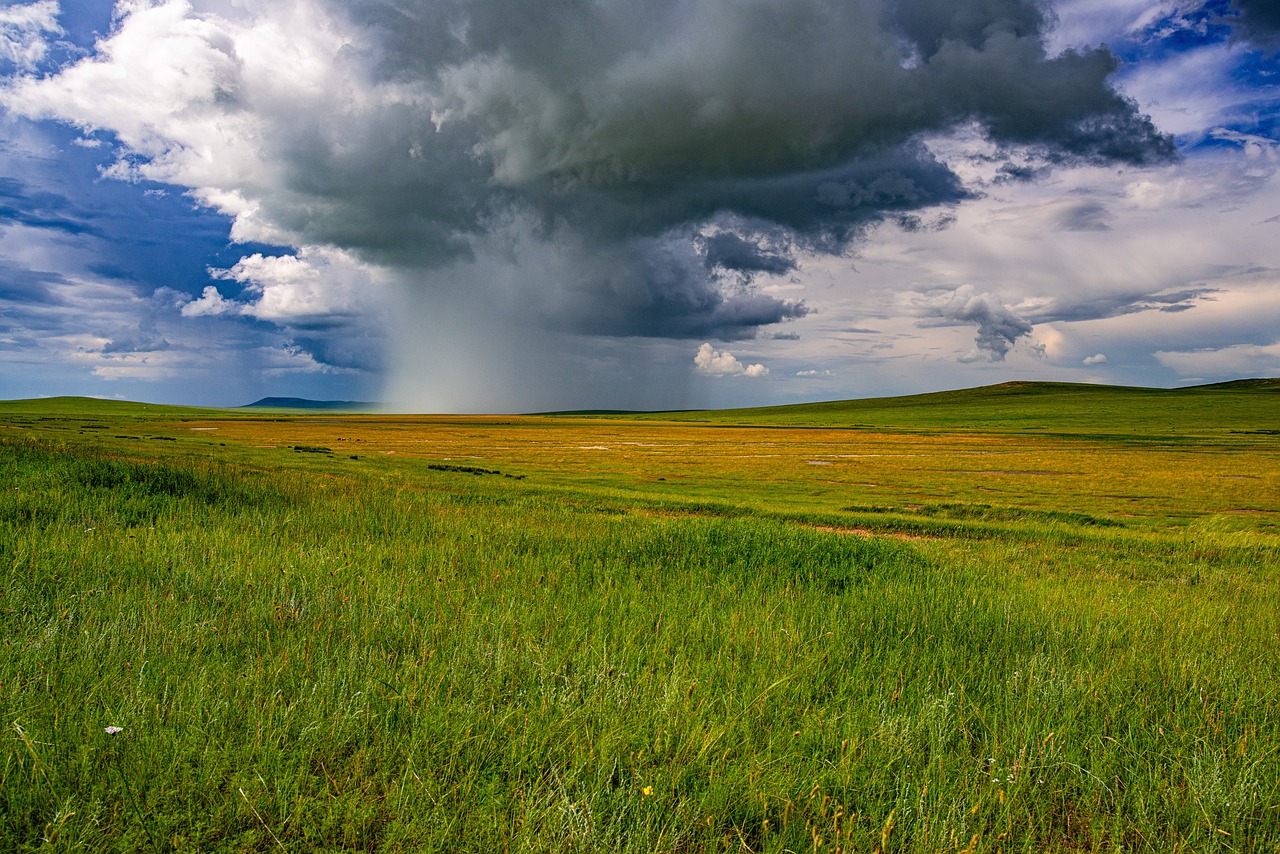 Clouds
Clouds
Rainfall mystery:
The mystery of Earth’s rainfall starts with the fact that rainfall begins from a solid state, not a liquid state.
We feel a rain droplet on the Earth as a liquid but in the sky, the droplet was not a liquid; it started with snow, a mixture of ice, air, and water droplets.
Rain on the Earth begins with the snow
The temperature above the Earth’s atmosphere is below 0’C and water droplets should freeze in this region, right? But this doesn’t happen here.
Water molecules tend to take the solid state here but could not do so because water molecules require a soil particle as an impurity surrounding to which they build an ice crystal and then form a block of ice which is a solid state. Here the particle acts as a catalyst to trigger this reaction.
In Earth’s atmosphere, different kinds of particles are present that can act as an impurity and trigger snow formation in the atmosphere. These particles originate from different places on Earth like deserts, mountains, fields, oceans, smoke evaporated from forest fires, etc. The storms from the deserts also carry soil particles from Earth to above Earth’s atmosphere.
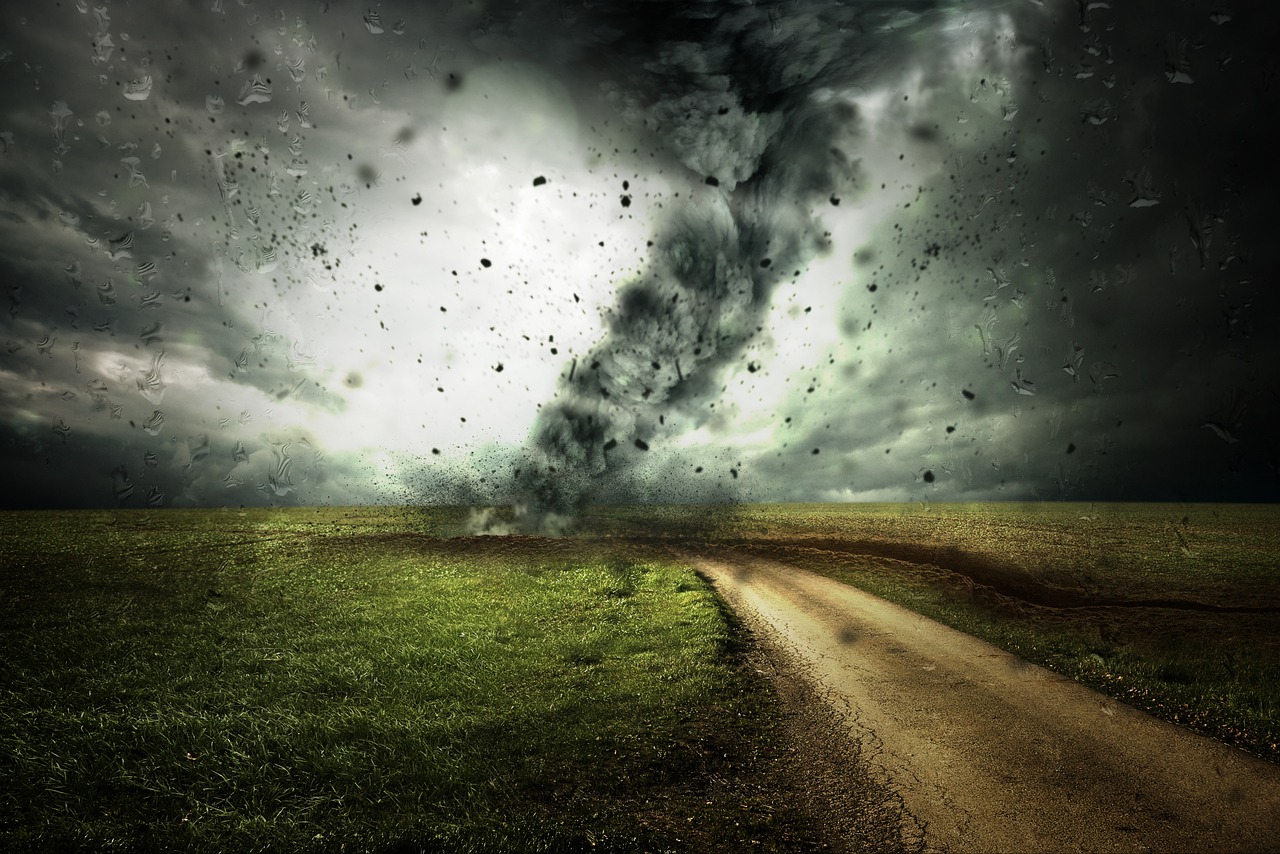 Storm
Storm
Some particles that help in the formation of rain also come from outer space like micrometeoroids. Around 2,720 Kg micrometeoroids strike the Earth’s atmosphere daily and our planet Earth is getting approx. 10,000 tonnes heavier each year due to the accumulation of micrometeoroids on the Earth falling from space.
Do you know? The path of the Earth’s rotation is through the clouds of micrometeoroids.
Micrometeoroids are even smaller than the width of human hair, so while falling on the Earth’s surface due to gravitational pull they experience the least or negligible friction, hence they do not experience heat and they don’t burn, unlike heavier meteoroids.
In fact, these micrometeoroids were once a part of a big comet, now entering the Earth’s atmosphere with lesser speed and getting trapped in the droplets of the sky. The water droplets in the sky want to crystallize but are unable and this micrometeoroid particle is helping them to crystallize.
As soon as the micrometeoroid particle comes in contact with the water droplets, they start to crystallize forming a new particle and this event happens billions of times per day.
Do you know? We can even find the composition of micrometeoroid particles in the rainwater sample.
After the successful formation of a new particle coming in contact with the micrometeoroid, these new particles become a base for other water droplets and they start freezing once coming in contact with them. And this ice-forming chain continues with crystals one upon another.
An attachment of many tiny snow crystals forms a new structure called a snowflake and when its weight exceeds a certain limit, it starts falling down under the influence of gravity. The more the mass of an object, the more the influence of gravity on the thing.
When these snowflakes fall down and approach the Earth’s atmosphere the temperature increases due to heat generated by the friction between the snowflake crystals and air.
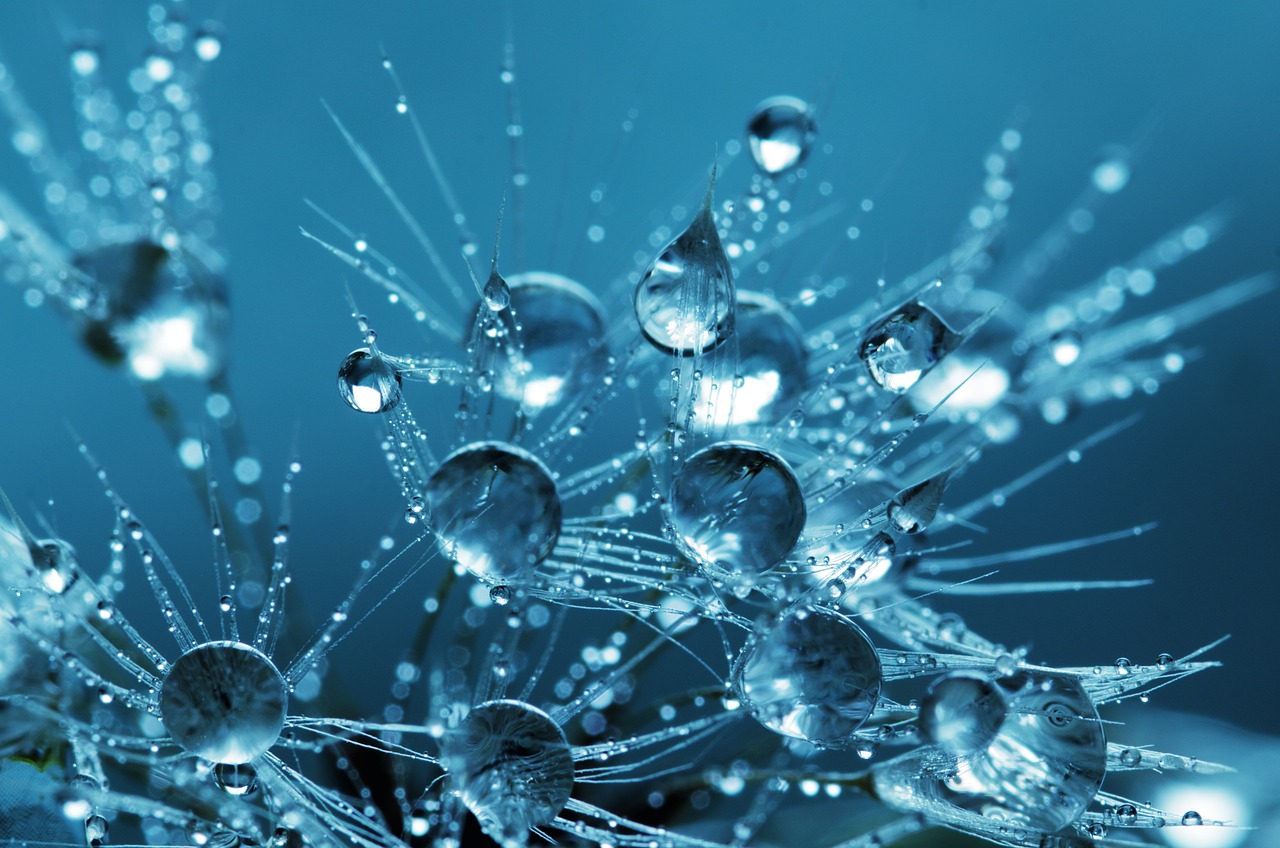 Snowflakes
Snowflakes
The heat generated from the friction melts the snowflakes, converts them into water droplets, forming rain, and finally, these rainwater droplets fall on the Earth’s surface.
During rain, if you hold rainwater on your palm, there are higher chances that you are holding a micrometeoroid on your palm. Isn’t this water cycle process weird?
Role of microbes in water cycle; Another mystery:
Rainwater droplets may contain something more apart from micrometeoroids or sand particles. These rain droplets can also be formed on the base of micro-living organisms. Yes, microorganisms can also trigger the formation of rainfall.
For many years Scientists believed that rainfall occurred only due to the solidification of water droplets on solid particles in the atmosphere but now Scientists have found that rainfall can occur due to microorganisms present in the atmosphere.
It is an intrinsic property of living organisms that keep moving or migrating from one place to another for their survival. Even microorganisms keep migrating from one place to another through the atmosphere
Microorganisms are so tiny that one lakh microorganisms may be present in one cubic meter of cloud.
Every day hot air from the Earth arises and carries around 20 lakh tonnes of bacteria into the atmosphere and a bacteria called “Pseudomonas syringae” is one of them.
Pseudomonas syringae is usually a habitat for plants and crops. Farmers hate Pseudomonas syringae because they harm the plant and crops.
They have a special ability to freeze water present on the plant even at normal room temperature.
How do Pseudomonas syringae freeze water?
Pseudomonas syringae synthesizes a special kind of protein that converts water droplets into ice crystals. When more waterfalls on this larger ice structure are formed.
[Wow, we can use Pseudomonas syringae culture to make ice without any refrigerator.]
So crops and plants infected with Pseudomonas syringae bacteria are affected more during rainfall or snowfall.
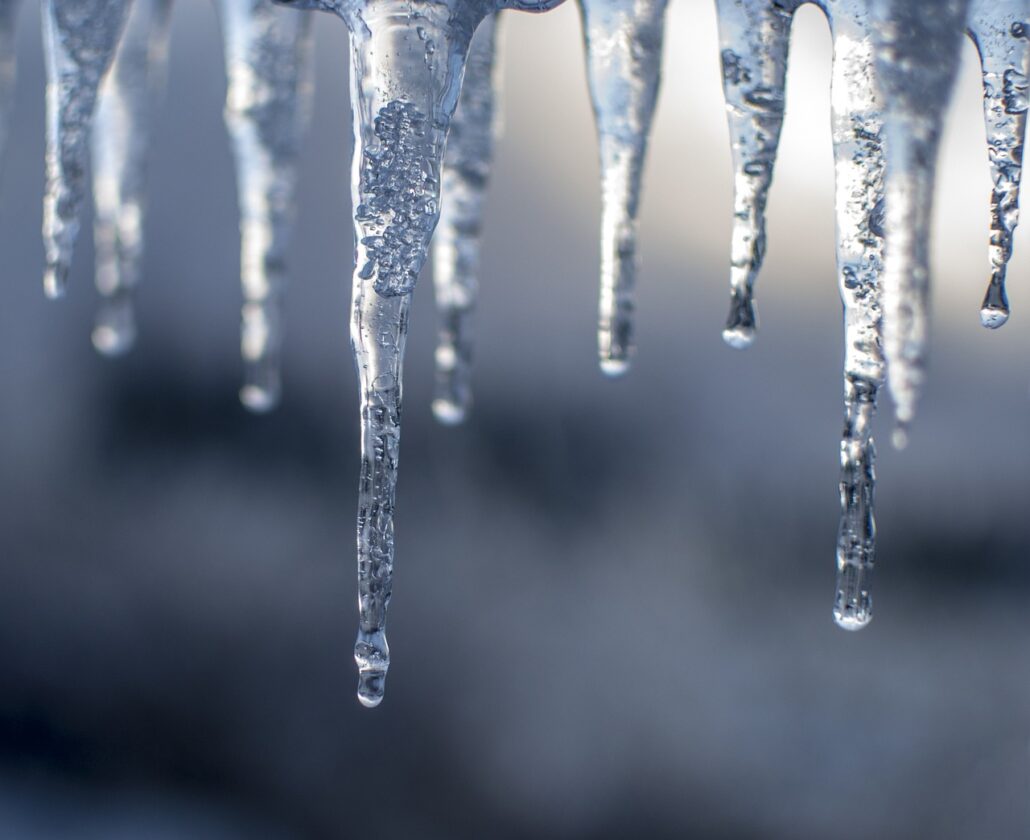 Water droplets
Water droplets
Whenever Pseudomonas syringae come in contact with cold water droplets in the Earth’s atmosphere, they turn them into ice crystals. These ice crystals take the structure of a snowflake and fall back to the Earth in the form of rainfall. These rod-shaped Pseudomonas syringae bacteria get a free trip from the Earth to the atmosphere and back to the Earth by compelling clouds to form the rain and forming the water cycle process. This is how the microbes affect the water cycle.
Why does soil smell after rain?
The smell of soil when rainwater falls on it is called petrichor. The reason for the smell is compounds like ozone(O3), geosmin, and oils secreted by plants.
Ozone is carried down to Earth by rainwater droplets from the sky while geosmin and plant oils are already on the Earth’s surface.
The term “petrichor” was first coined by Australian scientists in 1964.
Ozone – The chemical formula of ozone is O3, which gets mixed with rainwater when lightning occurs in the sky. O3 falls on the Earth through rainwater and gives petrichor.
Actinomycetes, a gram-positive bacteria found in both aquatic and soil secrete a compound called geosmin, which is released into the air through rainwater droplets and creates the petrichor fragrance. Geosmin is 79.06% Carbon, 12.17% Hydrogen, and 8.77% Oxygen.
During the warm season, plants produce Stearic Acid (C18H36O2) and Palmitic Acid (C16H32O2) compounds that accumulate in soils and rocks. These two plant oils are volatile and released into the air when it rains, causing petrichor.
Useful Glossary –
- Crore – ten million equals one crore
- Catalyst – a substance that helps chemical reactions happen faster by providing the base(In biomolecules enzymes acts like a catalyst that helps biological reaction happen faster)
- Petrichor – the smell of soil due to rain

